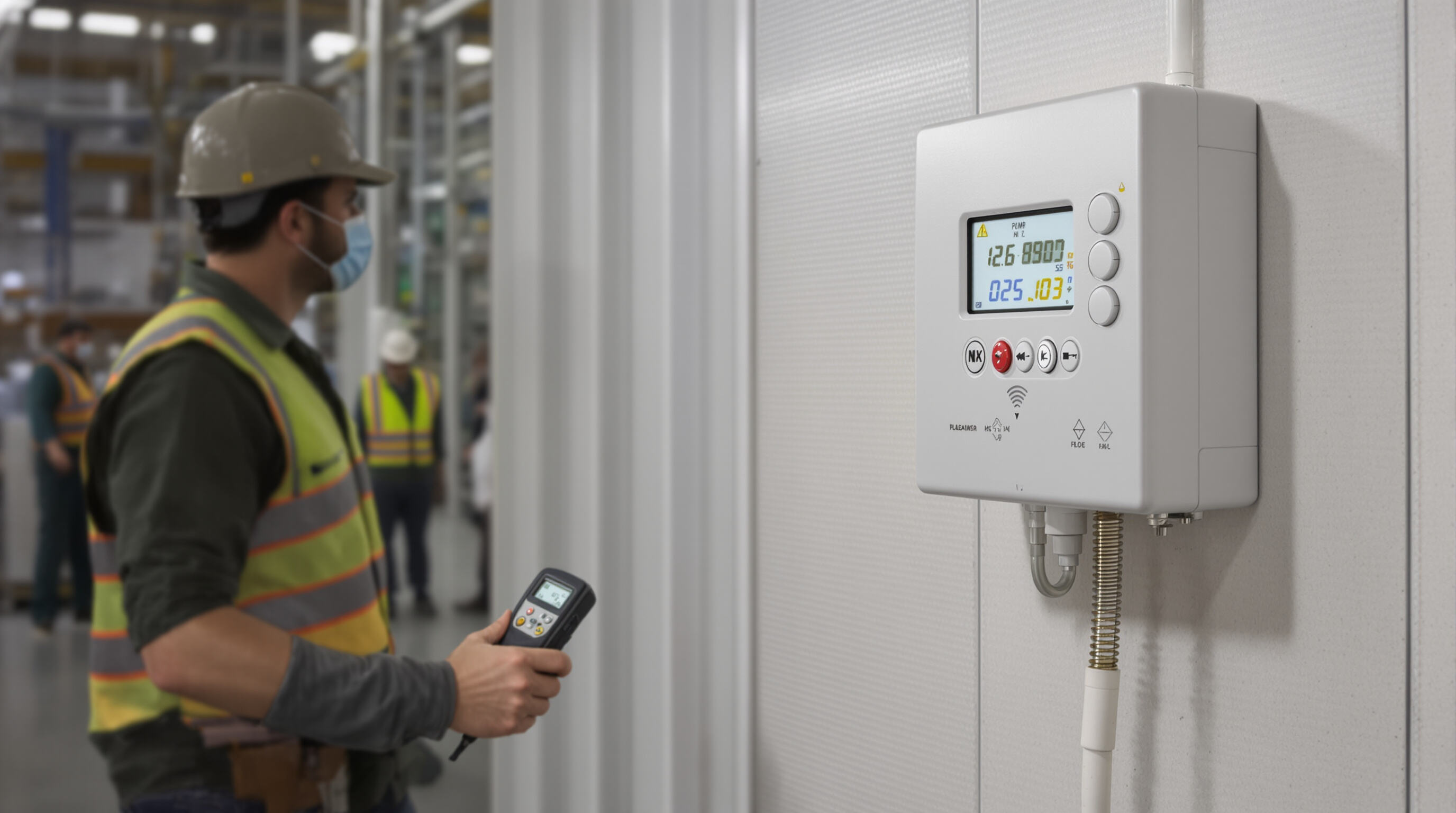Key Differences Between Portable and Fixed Gas Detectors

Design and Operational Distinctions in Gas Detector Systems
Gas detectors that are fixed in place get their power and communicate through permanent wiring, which makes them great for keeping an eye on things around the clock in dangerous areas like where pipelines meet or near storage tanks. These installations tie right into the main safety systems of a facility so they can trigger automatic responses when needed. Portable versions tell a different story though. They're small enough to carry around, run on batteries instead of being plugged in, and let workers know immediately if there's something wrong while they're working inside tight spaces or dealing with emergencies on site. Workers often rely on these handheld units during inspections or when responding to incidents where fixed equipment isn't practical.
| Design Feature | Fixed Gas Detectors | Portable Gas Detectors |
|---|---|---|
| Power Source | Line voltage | Rechargeable batteries |
| Calibration Cycle | Quarterly (automated alerts) | Pre-shift manual checks |
| Typical Mounting | Wall/pipe mounts | Belt clips or handheld |
Mobility, Installation, and Coverage Area Comparison
Most fixed detection systems need trained professionals to install them properly. These units generally handle areas between 300 to 500 square feet each, so they have to be placed carefully close to spots where problems might occur. The portable versions tell a different story though. Workers can just grab these and set them up wherever needed on job sites that are spread out or only temporary. No fancy wiring or permanent structures required at all. According to research published last year from the National Safety Council, companies using portable detectors saved almost two thirds on installation expenses when working on changing, temporary, or remote sites.
Detection Accuracy, Response Time, and Deployment Flexibility
Fixed detectors deliver high accuracy (±1.5% concentration) and allow for integration with automatic safety systems. They provide real-time alerts with precision and can often integrate into wider facility alert frameworks. On the other hand, while portable detectors provide less precision (±5% accuracy), they are still compliant with OSHA standards and deliver alerts within 10 seconds, which is crucial for protecting individuals in dynamic environments.
Use Cases for Fixed Gas Detectors in Industrial Environments
Constant Monitoring in High-Risk Areas
Gas detectors that stay put offer constant monitoring in places where even small leaks can cause major problems down the line. Around two thirds of hazardous areas, like pipelines and storage tanks, benefit from faster issue detection, with response times less than two seconds. This efficiency is crucial when preventing incidents that jeopardize safety.
Integration with Facility Safety Systems
Modern fixed detectors connect to industrial control systems via protocols like Modbus and BACnet, enabling automatic activation of safety protocols, ensuring regulatory compliance, and reducing fire safety risk. For example, they fulfill over 80% of OSHA safety monitoring requirements for confined spaces, thereby reducing citation risks significantly.
Use Cases for Portable Gas Detectors in Dynamic Situations
Protecting Workers in Confined Spaces
Workers in enclosed spaces like tanks, tunnels, or manholes face risks associated with poor air quality. Portable gas detectors are critical here, warning workers about low oxygen levels and other dangerous gases. Studies have shown that portable detectors have been instrumental in preventing many gas exposure-related fatalities.
Flexibility in Various Work Environments
The lightweight, battery-powered design of portable detectors is essential for temporary, remote, or rapidly changing work environments like offshore rigs, construction sites, or disaster recovery areas. These detectors can handle extreme conditions and detect multiple gases quickly, ensuring the safety of personnel without the need for permanent infrastructure.
Chest and Wrist-Worn Solutions
Providing immediate alerts through visual, auditory, and vibration signals, these devices help workers react promptly to elevated gas levels, giving them a vital edge in maintaining personal safety. Studies show a significant reduction in unexpected exposure incidents when workers utilize these wearable monitors.
Maximizing Safety with a Combined Portable and Fixed Gas Detection Strategy
An integrated strategy involving both portable and fixed gas detection systems can significantly enhance safety in industrial environments. For instance, SKZ Industrial Co Limited managed to reduce gas incidents by 68% through using fixed detectors for constant monitoring and portable devices for personal protection in high-risk areas. Facilities employing this dual-approach have witnessed up to 57% better danger identification accuracy compared to those relying solely on either type of system.
FAQ
What are the main differences between portable and fixed gas detectors?
Portable gas detectors are battery-powered, compact devices designed for mobility, offering immediate alerts in dynamic or temporary job sites with an accuracy of ±5%. Fixed gas detectors are permanently installed, powered by line voltage, and provide constant monitoring in high-risk areas with an accuracy of ±1.5%.
Why are fixed gas detectors used in industrial facilities?
Fixed gas detectors offer constant monitoring and quick response times in high-risk areas like pipeline junctions or storage tanks, which is crucial for preventing incidents. They integrate seamlessly with facility-wide safety systems and aid regulatory compliance.
What are the benefits of portable gas detectors?
Portable gas detectors are ideal for dynamic and temporary job sites. They are lightweight, battery-powered, and provide personal protection by alerting workers to immediate gas exposure risks. These devices are essential for ensuring safety in confined spaces and remote locations.
How to choose the right gas detector for a facility?
Consider factors like facility layout, coverage needs, and worker movement patterns. Fixed gas detectors are suitable for large industrial spaces with permanent installations, whereas portable detectors offer flexibility for temporary and dynamic work environments.

